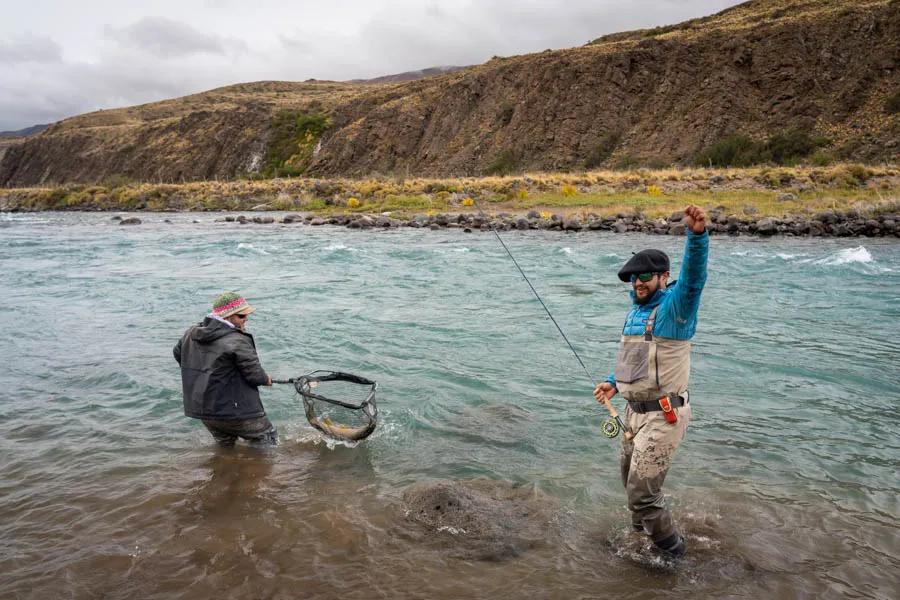
Standing in a river and waving a stick is just one of the ways renowned angling author John Gierach described walk-and-wade fishing. We could also add to his sentiments the following statement: “And, you’re trying to fool something that eats bugs and has a brain smaller than a pea.” Fly fishing initially appears very simple, but consistently fooling fish is actually a fairly complex process. Most of us began our fly fishing journey while walk-and-wade fishing--access to fly fishing guides and float fishing trips were often not an option. The joy and excitement of standing in a river fly fishing for trout is one we feel lucky we get to do it nearly every day, but we never lose sight of the importance of doing it safely.
Here are the Best 7 Tips for Walk and Wade Fishing

Always Use a Wading Belt
Even the most experienced anglers have taken a fall in a river. A properly worn wading belt can restrict water from filling your waders if you fall. A wading belt can save your life, period. It also allows you to keep things like your wallet, phone, and other valuables dry if you keep them in your pants pockets underneath your waders. The belt constricting the waders may not prevent all water from getting into your waders, but it will prevent a large amount of water from coming into your waders. If you fall into very deep water, a wading belt still will keep most water from filling your waders and causing you to drown. Always wear a wading belt even if you never plan to wade deeper than your knees on any river while fly fishing in Montana or the world.
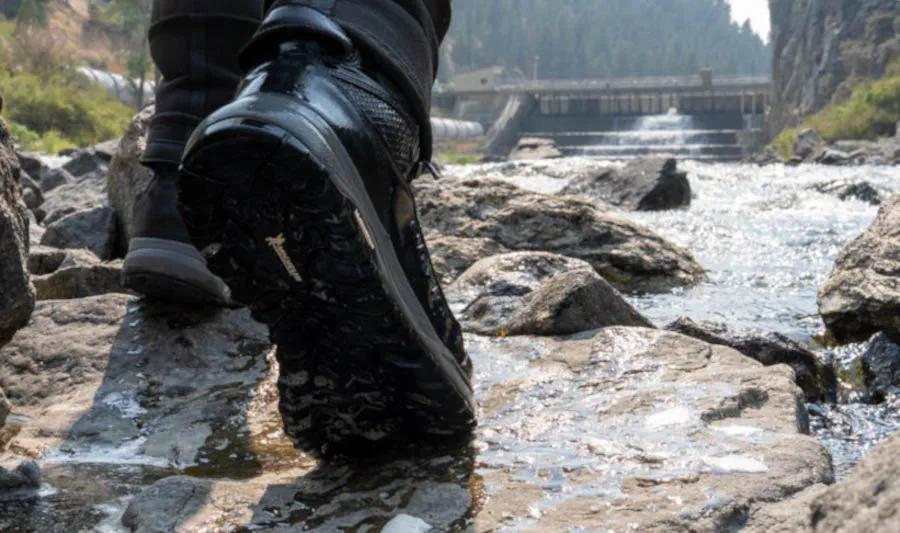
Choose the Proper Wading Boot
With many choices of wading boot soles, put some thought into choosing the right type of sole for your wading boot. Felt, rubber, or cleated/barred soles are all good choices. The type you choose depends on where you do most of your fishing. If you are lucky enough to have all three, then you can choose the boot appropriate for the type of fishing you will be doing. Felt soles have been around for many decades and provide the highest level of traction on submerged rocks. However, because felt soles retain water and biomass easily, they are not allowed in some areas, including when fly fishing in Yellowstone National Park, where the transport of wet felt soled boots can also transport aquatic invasive species. Rubber soles are the most versatile and will be allowed in all areas, but they are not as sticky as felt. Many anglers also add small cleats to their felt or rubber soled boots, but be sure they can be removed if you ever plan to fish from a boat.
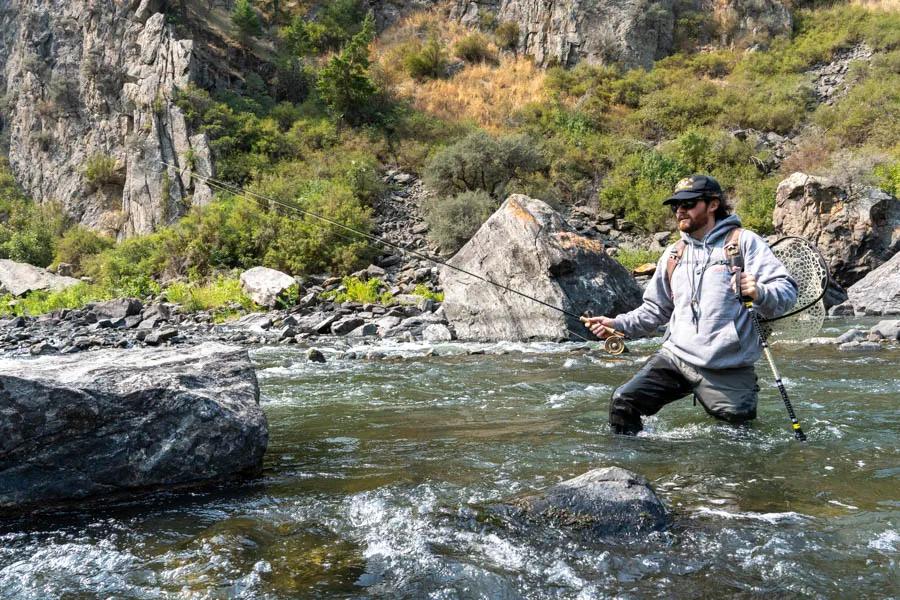
Use a Wading Staff for Safety and Better Fishing
A wading staff is an obvious choice to keep yourself safe while fishing, but did you know it can also increase your chances of angling success? By properly using a wading staff you can access water that may be difficult to reach without the security of wading safely. A wading staff can also be used to test the depth of the water if you are able to see to the bottom or if off-color water makes it hard to see below the surface. On rivers like the Upper Madison or Gallatin where there are a lot of Boulders, to safely use a wading staff for fly fishing, always place it on your upstream side so the current helps keep you upright if the staff slips. Position the staff close to your body, leaning into it as you step, and then reposition it before taking your next step. Secure the staff with a retractor or tether to prevent losing it and keep it out of the way.
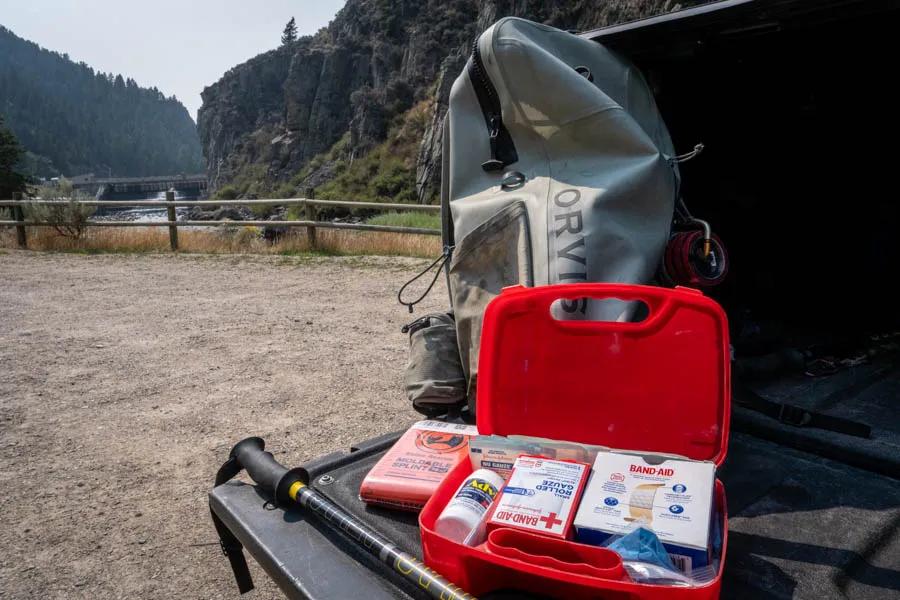
First Aid Kit
Walk and wade fishing on most trout streams requires hiking or walking on uneven ground, over boulders, up and down steep banks, and being active in a variety of other nooks and crannies. Factor in casting hooks and the potential for small injuries increases substantially. Most often injuries are small cuts and scrapes that do not impact your ability to continue fishing, but they could become bothersome if not treated quickly. Carrying a small first aid kit means you can quickly bandage any cut or scrape and add ointment. A first aid kit allows you to become self-sufficient as well, where immediate medical assistance may be hours or even days away, ultimately increasing your safety and ability to enjoy your trip.

Tell a Buddy or Someone Your Intended Plans
Going fishing with someone can add a lot of enjoyment to your day. However, be sure to choose an angling companion who shares a complimentary passion—chucking streamers, technical dry-fly fishing, hiking miles into remote waters to catch a native Grayling, into the carp game, and so forth. If you are going fishing alone, be sure to tell someone your plans--where, when, and what time you might expect to return. Even if you are fishing with someone it is a good idea to agree on a set rendezvous time and place. When going fly fishing in Montana or on an international fly fishing trip, always inform someone not fishing with you your intended plans.
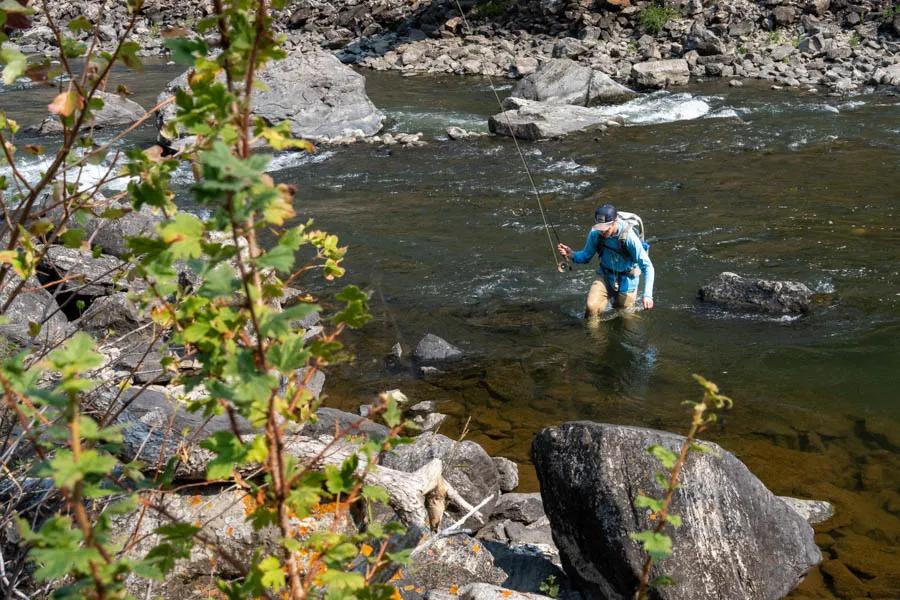
Know Your Limits
No fish is worth risking your life. But, if you do want to catch fish you may have to weigh some risk versus reward factors. Being in prime physical condition isn't a requirement to go fly fishing, but knowing how to stay safe is--and that means an introspective look in the mirror to asses where you can and cannot go on a trout stream based on your physical abilities. A few things to have in mind to know your limits are the following: first, have an exit strategy if you plan to venture down a steep bank or cross the river; second, be overly cautious in your ability to wade in water deeper than your knees because rocks can shift and currents can rise; lastly, always ask yourself "if I get hurt, can I get myself out of the water quickly?" Knowing your limits and staying within them will ensure you get home safely.
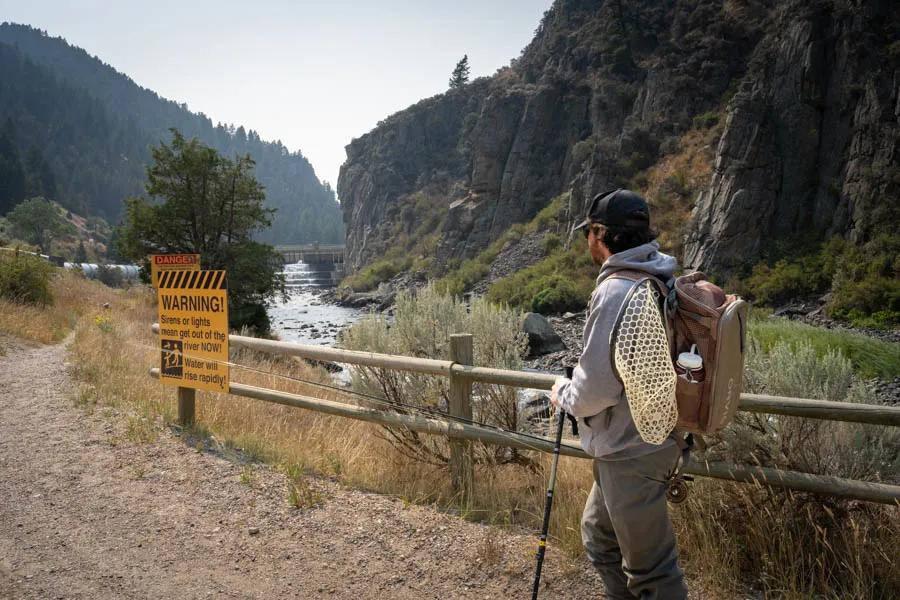
Watch Weather and Stream Flows
Many great places to fly fish in Montana of the world are in remote locations. Proper planning can ensure you return home safely. Before heading out for a day of fishing check the weather and stream flows. If inclement weather is forecast, prepare properly with quality gear. If heavy rains are forecast or have occurred recently, inquire locally to learn if river levels may rise rapidly. If you are fishing a tailwater river inquire at a local fly shop to learn if large fluctuations in flows is a possibility. While daily fluctuations in flows aren't as common on Montana's tailwater rivers like the Madison and Missouri, eastern and southern United States tailwaters can see large flow rises on a daily basis.

If Gierach summarized fly fishing one simple way when he titled one of his books, Standing in a River Waving a Stick, then grinding down fly fishing to it's core, Gierach is correct. Walk-and-wade fishing is the primary way most people go fly fishing. There are plenty of great fly fishing guides and plenty of wonderful rivers to float and fish from a boat, but when fly fishing comes to mind the picture most often painted is wading into a beautiful trout river and feeling the rush of water against your legs. Fishing safely is just as much an essential skill as learning to tie proper fly fishing knots or reading water. As Gierach also wrote, "Death can really cut into your fishing time." Not only does wading safely and accurately ensures you can go on future fly fishing trips, it means you will most certainly get home from your current one.
